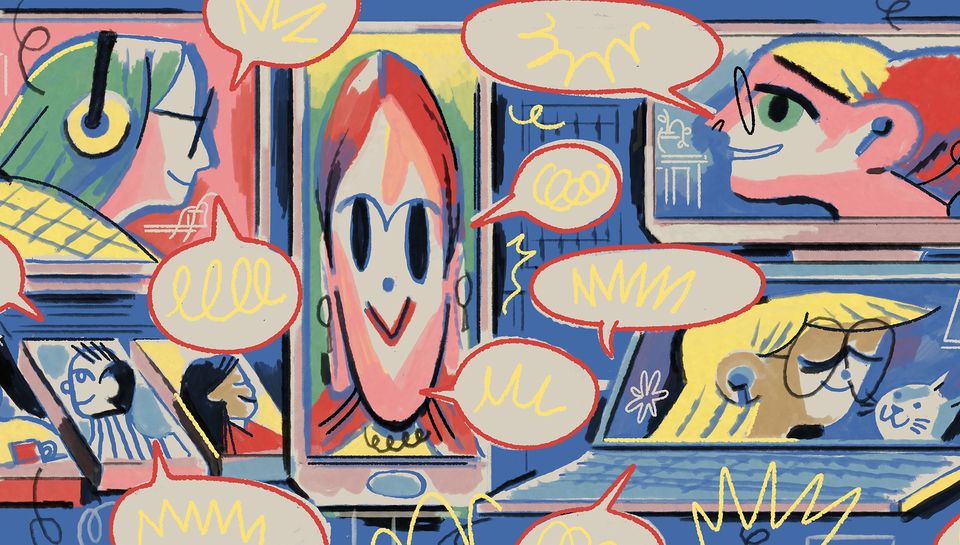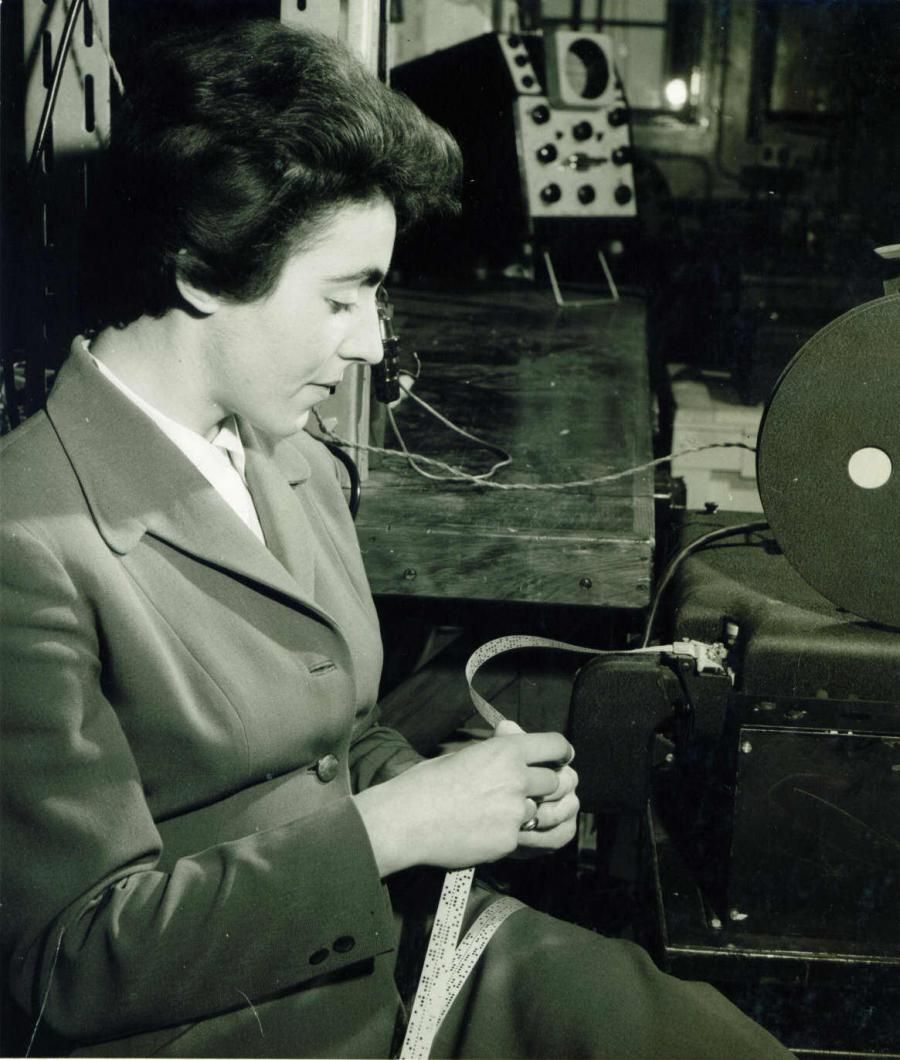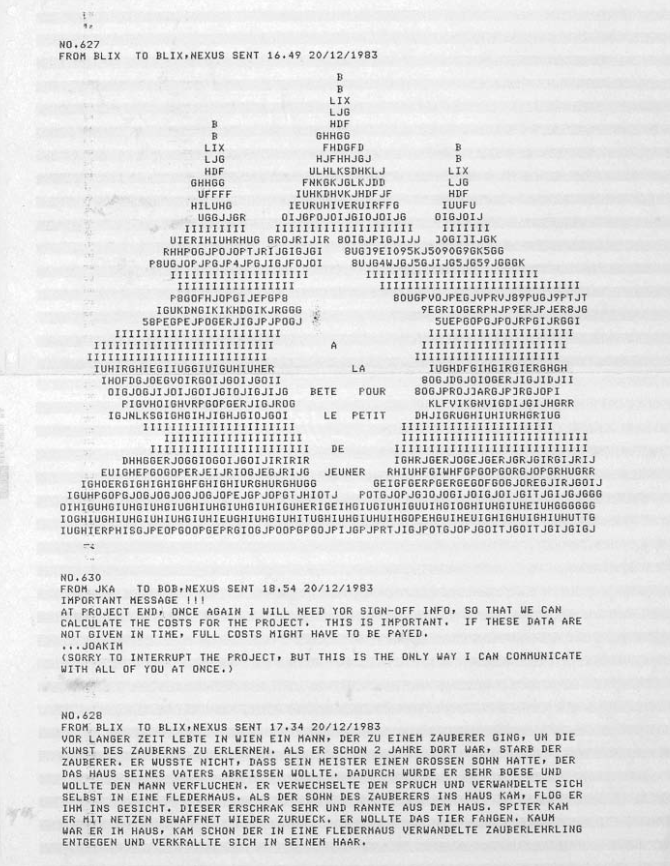It's Time to Re-Examine the Office-Serendipity Theory of Innovation
By Becky Kane

There's a common argument against remote work that goes something like this:
Sure, employees may be more personally productive when working remotely, but team creativity and innovation suffer. People need spontaneous interactions at the water cooler or in the break room or at happy hours to manufacture the serendipity that drives innovation.

If that argument sounds familiar, it may be because open floor plans — much in vogue in business circles throughout the early aughts and much vilified since — were also justified as a sure-fire way to create more serendipitous interactions.
People who subscribe to the Office-Serendipity Theory of Innovation like to point out that Steve Jobs was a remote work skeptic. A New York Times' article by Kevin Roose, titled “Sorry, But Remote Work Is Overrated,” cites Jobs’ views to support the argument that “most people should work in an office”:
“Creativity comes from spontaneous meetings, from random discussions,” Mr. Jobs said. “You run into someone, you ask what they’re doing, you say ‘Wow,’ and soon you’re cooking up all sorts of ideas.”
The Office-Serendipity Theory feels true on the surface, and there's certainly a lot of anecdotal evidence of chance office encounters to back it up. But it's also completely at odds with my own experience of six years collaborating on creative work at a remote-first company.
It’s hard not to think that leaders who say remote teams can’t be innovative are telling on themselves. Instead of seeing a potential problem as a starting point, they jump to writing off remote work entirely. Not exactly an innovative mindset.
On the face of it, logic would suggest that early adopters of remote work are, in fact, more likely to be innovative, open to new ideas and ways of working. But that’s a logical argument rather than a factual one. I wanted to see what the research says:
What makes teams successful and can those conditions be created on a remote team? Can remote teams be innovative?

Collaborative efficiency
One research-backed argument in favor of co-located teams versus remote ones is that groups are more "collaboratively efficient" when located in close proximity — that is, they solve problems faster.
An article in The Atlantic covering IBM's move to shutter their remote workforce in 2017 cites a handful of studies supporting this argument including one conducted at Ford Motor in the late 1990s:
"Ford Motor let Olson, a distance-work expert at UC Irvine put six teams of six to eight employees into experimental war rooms arranged to maximize team members’ peripheral awareness of what the others were up to. The results were striking: The teams completed their software-development projects in about a third of the time it usually took Ford engineers to complete similar projects."
The article concludes that:
"Today, in the age of the never-ending software update, business is more like a series of emergencies that need to be approached like an airplane’s fuel leak. You diagnose a problem, deliver a quick-and-dirty solution, get feedback, course-correct, and repeat, always with an eye on the changing weather outside."
If your employees are running around putting out fires day in and day out, you've got bigger problems than whether or not your team is co-located or remote. A team in constant reactive mode is neither productive nor innovative. Emergencies should be the exception, not the rule. Instead of optimizing for workforces that respond to emergencies, companies should be optimizing for workforces that prevent emergencies.
Collaborative problem-solving may happen more slowly on a remote team, but that can be its own advantage. The kind of asynchronous communication embraced by many remote-first teams allows for more thoughtful responses, fewer interruptions, and more focused work. If the open floor plan fiasco has taught us anything, you can't optimize the workplace for real-time collaboration and serendipity without hindering people's ability to disconnect and focus on their work. There needs to be balance.
Going fully remote was nice, but the real benefit was in going fully asynchronous. Here are a list of the benefits we've seen at @Gumroad:
— Sahil Lavingia (@shl) January 29, 2020
A thread 👇🏽
Of course, emergencies happen despite our best efforts. When they do, remote teams need systems and protocols in place to deal with them efficiently. However, even in those cases globally distributed teams are often still better positioned than co-located ones to respond as they always have people awake during working hours to deal with them. For example, our development and support teams at Doist span the globe from Syndey, Australia to Cumilla, Bangladesh to Vancouver, Canada. That built-in time zone coverage allows us to identify and respond to emergency situations quickly without the need for overnight "on call" shifts.
I’m willing to concede that — under experimental conditions where time zones aren’t an issue — co-located teams may be able to solve urgent problems more quickly than remote ones, but are they better at creating the real-world conditions under which long-term collaborative productivity and innovation thrive?
Diversity of perspectives
Decades of research have established that socially diverse groups — groups that represent diversity of race, ethnicity, gender and sexual orientation — are more innovative than homogeneous ones. According to a Scientific American article titled How Diversity Makes Us Smarter:
"The key to understanding the positive influence of diversity is the concept of informational diversity. When people are brought together to solve problems in groups, they bring different information, opinions and perspectives. This makes obvious sense when we talk about diversity of disciplinary backgrounds—think again of the interdisciplinary team building a car. The same logic applies to social diversity. People who are different from one another in race, gender and other dimensions bring unique information and experiences to bear on the task at hand. A male and a female engineer might have perspectives as different from one another as an engineer and a physicist—and that is a good thing."
Even if we were to accept the premise that — again, under perfect experimental conditions — the same exact group of people is more innovative collaborating in-person than collaborating remotely, that still wouldn't support the argument that co-located teams will be more innovative that remote ones.
[app_quote_featured]And no matter how many diversity check boxes a co-located company ticks, their workforce will, by definition, be homogeneous in where their employees live.[/app_quote_featured]
The world doesn't exist in perfect experimental conditions. The choice isn't between having people work in the office versus having the same group of people working from home. Remote work opens companies up to a literal world of new talent — people from other towns, states, countries, and continents; people who, by necessity or choice, won't relocate to urban hubs; and people with disabilities that may hinder them from working in a traditional office.
Large, well-established brands like Google, Apple, and the New York Times' may be able to attract a diverse workforce willing to relocate to major metropolitan areas for those prestigious jobs, but remote work allows smaller, lesser known companies like Doist to assemble teams from around the world too.
And no matter how many diversity check boxes a co-located company ticks, their workforce will, by definition, be homogeneous in where their employees live. If the last four years of American politics have taught us anything, geographic cultural bubbles have real consequences. Imagine if the New York Times' had remote reporters living in Buchanan County, Ohio. Or if Facebook had remote executives living in Myanmar.
What kinds of different perspectives might be brought to the table?
I'm not saying that remote workplaces are immune to the biases and inequalities that plague the rest of society. Remote companies still struggle to close the gender and racial gaps that exist in the tech industry as a whole. There are still large geographic disparities — for example, Doist only has one employee from the entire African continent that's brimming with technological talent. But you would be hard-pressed to find a co-located company of 85 employees that represents as many nationalities as Doist (currently 38 nationalities residing in 33 different countries and counting).
Would I love the option to see my teammates in-person whenever I want? Of course! But if Doist were co-located, my teammates would not be my teammates. They would be an entirely different group of people all residing in the greater Minneapolis-St Paul metropolitan area. No offense to my fellow Minnesotans, but my work life would be much less rich in serendipity for it.
Psychological safety
In 2012, Google launched an internal research initiative called "Project Aristotle" to study what made some teams succeed and others fail. What they found surprised them.
It wasn't the teams with the smartest people or the ones who socialized outside the office that stood out. It didn't matter if the team was mostly introverts or extroverts or a mix of the two. Some high-performing teams embraced strict rules around conversational order while others interrupted each other constantly. Some engaged in small chit chat about their personal lives while others got right down to business.
No matter how they sliced and diced the data, they couldn't find any strong patterns, except one. As journalist and author Charles Duhigg summarized in his article "What Google Learned From Its Quest to Build the Perfect Team":
"Google’s data indicated that psychological safety, more than anything else, was critical to making a team work."
What does psychological safety mean? Duhigg continues:
"Harvard Business School professor Amy Edmondson defines [psychological safety] as a "shared belief held by members of a team that the team is safe for interpersonal risk-taking." Psychological safety is "a sense of confidence that the team will not embarrass, reject or punish someone for speaking up," Edmondson wrote in a study published in 1999. "It describes a team climate characterized by interpersonal trust and mutual respect in which people are comfortable being themselves."
Unfortunately, Project Aristotle only studied the dynamics of co-located teams, but the effects were so strong it stands to reason that psychological safety plays a more important role in team performance than whether or not everyone is in the same room.
Remote-first teams like Buffer, Gitlab, Doist, HelpScout, Basecamp, Automattic, and YNAB tend to embrace values of trust and transparency not just because it's a nicer way to work (which it is) but out of necessity. The opposite — micromanagement and unequal access to information — isn’t effective even when you're all in the same room together, but those conditions are even harder to maintain when your team is collaborating virtually across time zones.
Trust and transparency tend to make people feel respected, valued, and safe to voice dissenting opinions. Because the vast majority of Doist's communication happens asynchronously in Twist threads instead of meetings, new teammates can see trust and transparency in action.
On day one, they can read every important conversation that's ever taken place at the company from how Twist got its name to post-mortems of projects gone awry and even the at times tense conversations that have happened after someone was let go. Teammates can see a fully intact time capsule of people challenging ideas and presenting new viewpoints and having their perspectives acknowledged and taken seriously. It gives them confidence they can do the same.
Doist product marketer Aer Parris who joined the team in February 2020 described the experience this way:
“I've been able to look through the conversations our team leadership is having even before starting at Doist (I was given Twist access a few days before I started). Being allowed to join in on conversations at the highest level of the company (as well as seeing other "lower-level" workers freely sharing thoughts) automatically sent me the message that I'm welcome, that there is actual transparency at all levels of the company, and that my opinions truly matter.”
I'm willing to bet that operating with trust and transparency as the default trumps serendipitous break room small talk when it comes to creating psychological safety.
Can co-located teams choose to embrace trust and transparency? Absolutely. But the fact that remote teams can’t see each other in an office every day pushes them to adopt these best practices out of necessity rather than choice.
Examples of remote innovation aren’t hard to find
If you use the internet, you’ve enjoyed the fruits of remote innovation. Some of the most innovative software projects in the world — both in terms of products and governance — are open-source, developed remotely and asynchronously (by volunteer communities no less).
Take the Linux kernel, the basis for the Linux family of open-source operating systems. As of 2017, roughly 15,600 developers from all over the world had contributed to the kernel. Today, Linux powers the servers that run 96.5% of the top one million web domains in the world, an estimated 92% of the public cloud, and 70% of smartphones in the world (the Android mobile operating system is based on the Linux kernel).
The development of the Linux kernel also gave birth to Git, an open-source version control system that lets thousands of developers collaborate — remotely and asynchronously — on the same complex codebase. Git in turn has powered innovation not just in other software products, but also in how developers work together to build and maintain code. Git was, and still is, developed remotely.
What about for-profit examples of remote innovation?
In 1962, Stephanie “Steve” Shirley founded a work-from-home contract programming company called “Freelance Programmers”. The company hired women programmers exclusively, pioneering “the idea of women going back into the workforce after a career break, and promoted flexible work methods, job sharing, profit-sharing, and company co-ownership.”
Freelance Programmers was “instrumental in helping develop software standards, management control protocols, and other standards that were eventually adopted by NATO.” All with a fully distributed workforce. In the 1960s.
When the company went public in 1996 it was valued at US$3 billion. 70 of her employees became millionaires.

Want more modern examples? Automattic, the company behind the world’s most popular content management system WordPress which powers 39.5% of websites on the internet, is fully distributed with 1,335 employees in 77 countries speaking 99 different languages. In its last round of fundraising in 2019, Automattic was valued at US$3 billion.
Remote-first companies GitLab and Zapier are currently valued at US$6 billion and US$4 billion with 1,289 and 350 employees, respectively. Clearly, they’re doing something right.
A great question is “can you innovate remotely as well as a startup”. We built Box for the first ~18 months entirely distributed, before video, Slack, real-time documents, and any of today’s other modern tech. Basically the entire company was built over AOL instant messenger.
— Aaron Levie (@levie) May 25, 2020
Successful remote, asynchronous collaboration isn’t limited to the field of software and computer programming, either. Artists have been creating together remotely for decades.
In 1980, the British artist Roy Ascott pioneered the field of telematic art with “his work Terminal Art in 1980, which consisted of organizing a three-week computer-conference connecting Ascott with seven other artists across the globe to generate ideas collectively from their respective studios.”

Ever wonder how The Postal Service got their name?
“The band's name was chosen due to the way in which it produced its songs. Due to conflicting schedules, Tamborello wrote and performed instrumental tracks and then sent the DATs to Gibbard through the United States Postal Service, who then edited the song as he saw fit (adding his vocals along the way) and sent them back to Tamborello."
Were these companies and collaborations successful in spite of being remote? Or because of it? In software development, Conway’s Law states:
“Organizations which design systems … are constrained to produce designs which are copies of the communication structures of these organizations….
In colloquial terms, it means software or automated systems end up "shaped like" the organizational structure they are designed in or designed for.”
Remote teams are going to have different communication structures than co-located teams. They’re going to see the world through different lenses, and they’re going to create different products and services and companies as a result. It’s hard to imagine a tool like Git being the tool it is today had it been developed by a traditional, co-located team. Constraints breed creativity, after all.
I'm not arguing that remote teams are a utopia. There will be diverse remote teams and homogeneous ones, positive remote cultures and toxic ones, innovative remote teams and stagnant ones, and everything in between. Just like co-located teams.
Innovation isn't a function of cubicles vs open floor plans, co-located teams vs remote ones. The factors that drive creativity and results are the diversity of perspectives you gather to your team and the group norms of mutual respect you create together. People need to bring diverse viewpoints to work and they need to know it's safe to voice them.
Remote work isn't perfect and it won't be a good fit for everyone. It can be lonely and isolating. It can feel awkward and forced connecting with new coworkers virtually. Remote workers also tend to work longer hours and have a harder time setting boundaries between work and life. With an emphasis on results over time spent working, it's hard to feel like you've done "enough".
The western world is experiencing an epidemic of social dislocation and burnout that started long before COVID-19. Remote companies need to make sure they're part of the solution, not the problem.
They need to be proactive in setting a culture that values reasonable hours and taking time off.
They need to be proactive in creating opportunities for people to meet and get to know one other – both virtually and in-person. There's a reason many remote companies finance an all-expense-paid team retreat every year (2020 notwithstanding).
They need to be proactive in helping employees craft their workdays to fit their needs. For example, based on our founder and CEO's own experience with isolation and burnout working from home early in his career, Doist covers the full cost of a coworking space membership for those who need that social interaction and separation between work and home.
At Doist, we choose to see these problems with remote work as starting points for exploring new possibilities, not justifications to write it off. Whether companies like it or not, remote work is a force they'll have to contend with. 59% of US workers say they want to continue working remotely as much as possible post-pandemic. Industry leaders like Facebook, Twitter, and Shopify are starting to adopt permanent remote work policies.
The toothpaste is out of the tube and it's not going back in. Leaders who aren't engaging in the discussion around remote work and innovating ways to make it work better are going to be left behind.
What’s Twist? Twist is an async messaging app for teams burned out by real-time chat, meetings, and email.
You don’t need to use Twist to get a ton of value out of this newsletter and community. But if the topics we talk about resonate with you, there’s a good chance the app will too. See what makes Twist different →
🌎 Built asynchronously by the fully remote team at Doist
